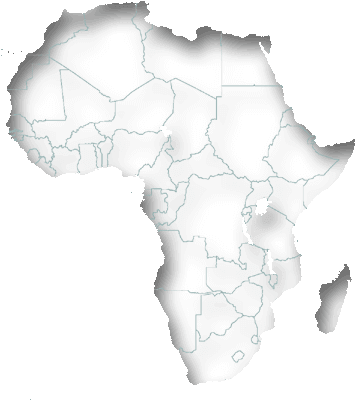
Africa
The straight borderlines in North Africa are striking and often look like they were drawn with a ruler over hundreds of kilometres. Until colonial times, there were hardly any fixed national borders. It was not until the late 19th century that the northern countries of Africa were divided up by Europeans according to purely political and economic criteria. Ethnic or geographical criteria rarely played a role here.
Northern Africa
AlgeriaEgyptLibyaMoroccoSouth SudanSudanTunisiaWestern SaharaSouthern Africa
BotswanaEswatiniLesothoNamibiaSouth AfricaWestern Africa
BeninBurkina FasoCape VerdeGambiaGhanaGuineaGuinea-BissauIvory CoastLiberiaMaliMauritaniaNigerNigeriaSaint Helena, Ascension and Tristan da Cunha ¹SenegalSierra LeoneTogoAfrican alliances and trade agreements
- African Union
- CEMAC - Economic and Monetary Community of Central Africa
- COMESA - Common Market for Eastern and Southern Africa
- COMESSA - Community of Sahel-Saharan States
- ECOWAS - Economic Community of West African States
- Maghreb
- EAC - East African Community
- SACU - Southern African Customs Union
- SADC - Southern African Development Community
- UEMOA - Economic and Monetary Community of West Africa
After Asia, Africa is the second largest continent in the world. Traditionally, Africa is a more rural area, but as in all parts of the world, urbanization is increasing and the population is moving from the countryside to ever larger cities. The largest cities in Africa with more than five million inhabitants are currently sorted in descending order of size: Lagos (Nigeria), Kinshasa (Democratic Republic of Congo), Cairo (Egypt), Ibadan (Nigeria) and Casablanca (Morocco).
The standard of living is considerably below average. Life expectancy is well below 60 years and large sections of the population have neither adequate sanitation nor medical care. Even the water supply is inadequate in many populated areas.
The picture has been changing for about 20-30 years. Most of the world's fastest growing economies are located in Africa. This is also due to changes in political direction, which increasingly have democratic structures and thus improve economic and personnel development. Long-standing civil wars have ended and the infrastructure can be expanded by the advancing industrialization. The large desert and rainforest areas have always been an obstacle to the smooth movement of goods.
Economy and standard of living in Africa
The economic importance of African countries is rather low compared to other continents. The average income on the least industrialized continent is almost consistently at the lowest end of the scale in a global comparison. It should be kept in mind that an enormous proportion of the population is considered to be self-sufficient. This means that in the many agricultural regions, the inhabitants are self-sufficient and therefore do not need any money that could be collected with the financial-based measurement methods of the industrial nations. It is assumed that 30% of the population of sub-Saharan Africa feed themselves completely and that a further 50% will cover at least a large parts of their own needs through agriculture, livestock breeding and other ways that cannot be measured in monetary terms. This means that the countries' tax revenues and the resulting possibilities for financing infrastructure, education and health care are correspondingly low.The standard of living is considerably below average. Life expectancy is well below 60 years and large sections of the population have neither adequate sanitation nor medical care. Even the water supply is inadequate in many populated areas.
The picture has been changing for about 20-30 years. Most of the world's fastest growing economies are located in Africa. This is also due to changes in political direction, which increasingly have democratic structures and thus improve economic and personnel development. Long-standing civil wars have ended and the infrastructure can be expanded by the advancing industrialization. The large desert and rainforest areas have always been an obstacle to the smooth movement of goods.